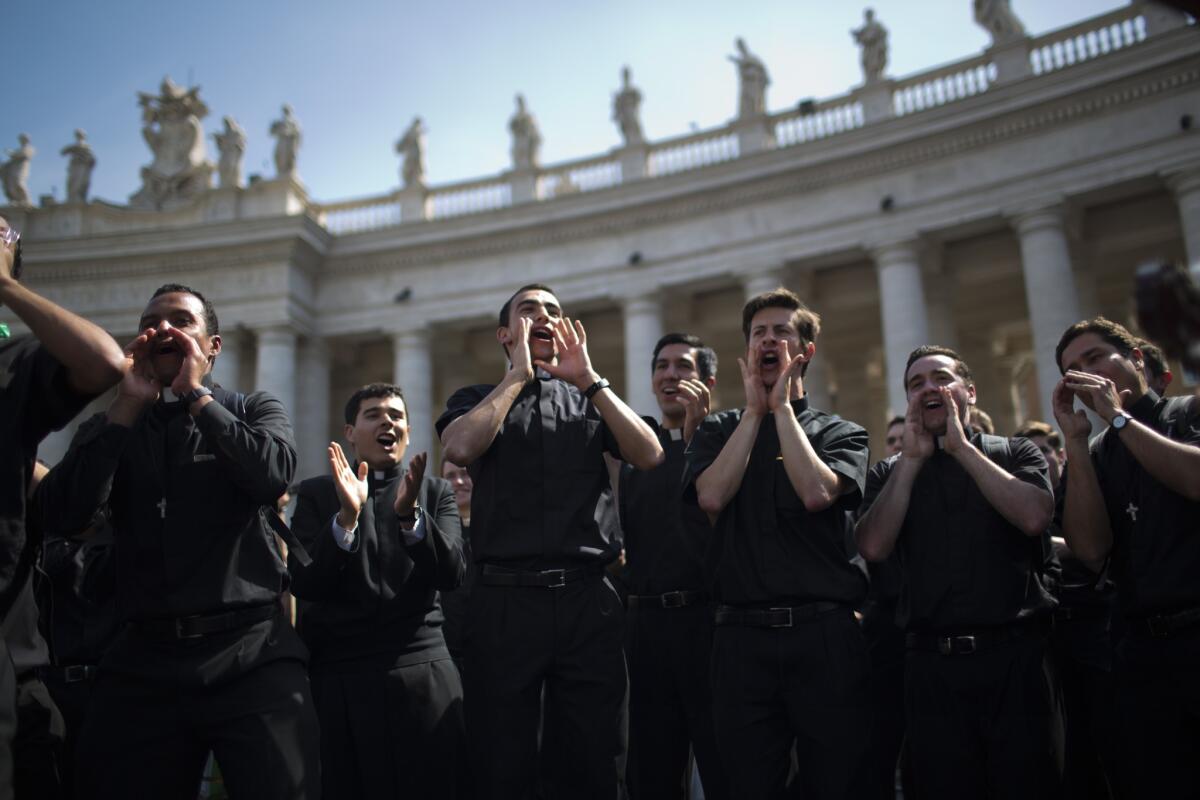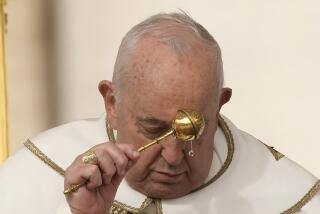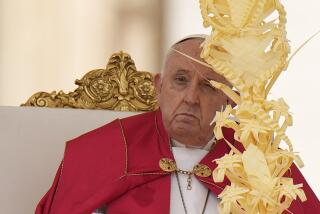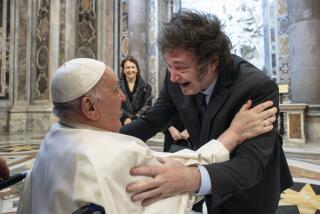Crowds flood Vatican City for dual papal canonization

Tens of thousands of pilgrims were gathering here Saturday in heady anticipation of Sunday’s dual canonization of two of the most influential popes of recent times, John Paul II and John XXIII.
It will mark the first time in the long history of the Roman Catholic Church that two ex-popes are made saints on the same day.
On Saturday, the Vatican confirmed another first—retired Pope Benedict XVI will assist Pope Francis during the sainthood ceremony. That means two living popes will help canonize a pair of their predecessors in a singular celebration of four pontiffs, alive and dead.
Authorities expect as many as 1 million pilgrims and other visitors to descend on the Vatican. Video hookups of Sunday’s ceremony will be set up at piazzas throughout the city.
Police were preparing Saturday to erect barriers around St Peter’s Square, leaving it accessible at a few entrances equipped with metal detectors. Some visitors brought sleeping bags and apparently planned to stay overnight near the square.
Streets close to the Holy See were bustling Saturday as visitors from throughout the world—including a huge contingent from Poland, the homeland of John Paul II—gathered in St. Peter’s Square, Via della Conciliazione and other nearby areas.
“The excitement is building by the hour,” said a Mexican priest, Father Alfonso Romero, 52, who was bearing an image of the Virgin of Guadalupe, patroness of Mexico and Latin America, as he walked amid the throngs close to the Vatican. “Both of these popes were very beloved.”
Those with the highest profile in attendance were perhaps the Poles: Many hoisted Polish flags and signs emblazoned with the names of their hometowns and the Polish national colors. Some prayed in unison in Polish as the sun broke through the clouds on a hazy spring afternoon, cooled by a gentle breeze.
“John Paul II meant everything to us: His history is the recent history of Poland,” said Aneta Jarzaybeck, 42, a physical therapist from Warsaw.
But as is usually in the case in St. Peter’s Square, the gathering was international and diverse in nature.
“Pope John Paul II was always my favorite pope: That’s why I wanted to come here,” said Francis Raji, 36, part of a group of Nigerian pilgrims who made the journey from Lagos. “He cared about the poor. He had a good impact on the politics of the world.”
As for the current pontiff, Pope Francis, Raji said: “He’s a jolly good fellow too.”
Benedict XVI retired from the papacy a year ago, and since has largely dedicated himself to prayer in a house on the Vatican grounds, according to church officials.
It was Francis, Benedict’s successor, who sought to include Benedict in Sunday’s dual canonization celebration, the Vatican said.
Pope John Paul II, born Karol Józef Wojtya and known for his fierce opposition to communism, died in 2005 after serving as pontiff for almost 27 years, one of the longest papal tenures in history. He was the first non-Italian pope in more than four centuries. He was widely recognized as a world leader of considerable stature, despite criticisms of what some viewed as an overly conservative outlook and lack of prompt action against allegations of sexual abuse of minors by priests. In 1981, he was shot and seriously wounded in an assassination attempt in St. Peter’s Square. He later forgave his attacker.
John XXIII, born Angelo Giuseppe Roncalli to a poor rural family, is said to be a favorite of Pope Francis, who, like John XXIII, was also known for his lack of pretension and common touch.
John XXIII, who served as pontiff from 1958 until his death in 1963, is best known for having convened in 1962 the historic Second Vatican Council, known as Vatican II, though he did not live to see its completion. Vatican II led to a number of landmark and sometimes controversial changes in church practice, including the use of vernacular languages in Holy Mass instead of Latin, and a more ecumenical stand toward other religions.
Both popes had their paths to sainthood shortened through the intervention of later pontiffs.
In the case of John Paul II, his successor, Benedict XVI, waived the mandatory five-year waiting period before considering him for beatification, a step before sainthood. And Pope Francis bypassed the need for a second miracle when he signed the canonization decree for John XXIII in July.
Twitter: @mcdneville
Kington is a special correspondent.
More to Read
Start your day right
Sign up for Essential California for news, features and recommendations from the L.A. Times and beyond in your inbox six days a week.
You may occasionally receive promotional content from the Los Angeles Times.






